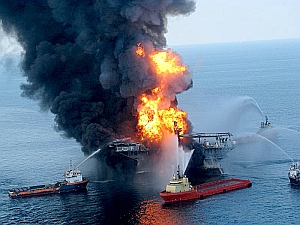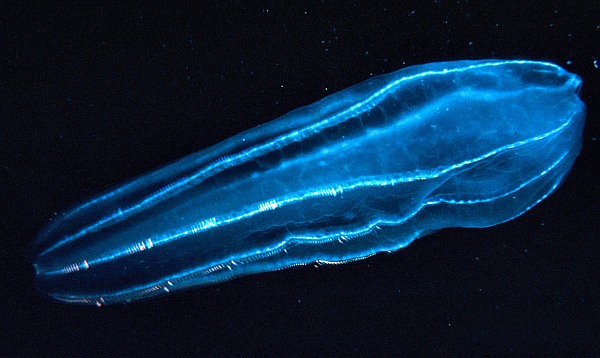Cambridge, Md — Since the explosion and subsequent oil spill of the BP Deepwater Horizon drilling rig in the Gulf of Mexico on April 20, 2010, scientists have been working to determine the impact this disaster has had on the environment.
Research by East Carolina University in Greenville, North Carolina, University of Maryland Center for Environmental Science, Oregon State University, Georgia Institute of Technology, and US Geological Survey confirms that oil from the disaster has entered the marine food chain of the Gulf of Mexico.
 |
| For months, crude oil gushed into the Gulf of Mexico at a rate of approximately 53,000 barrels per day before the well was capped on July 15, 2010. |
For months, crude oil gushed into the Gulf waters at a rate of approximately 53,000 barrels per day before the well was capped on July 15, 2010. The study found evidence of crude oil from the BP spill in zooplankton, small animals that play a critical role in the aquatic food web.
Tiny drifting animals in the ocean, zooplankton serve as food for baby fish and shrimp. They can act as conduits for the movement of contaminates into the food chain and are therefore useful in tracking oil and other pollutants.
Dr. Siddhartha Mitra with ECU's Department of Geological Sciences and Dr. David Kimmel with the Department of Biology and Institute for Coastal Sciences and Policy worked with students to analyze samples of zooplankton collected from the Northern Gulf of Mexico in August and September 2010.
They identified the origin of the oil by examining polycyclic aromatic hydrocarbons (PAHs), natural components of crude oil known to cause cancer, reproductive problems, and birth defects. These PAHs can be used to "fingerprint" oil and determine its derivation.
"Our research identified a signature that is unique to the oil from the Deepwater Horizon well; something that other researchers interested in the spill will be able to use," said Dr. Mitra. "Furthermore, our work demonstrated that zooplankton in the Gulf of Mexico ecosystem accumulated toxic compounds derived from the well as much as a month after the well was capped."
The extent of the contamination seemed to be patchy. Some zooplankton at certain locations far removed from the spill showed evidence of contamination, whereas zooplankton in other locations, sometimes near the spill, showed lower indications of exposure to the oil-derived pollutants.
"Traces of oil in the zooplankton prove that they had contact with the oil and the likelihood that oil compounds may be working their way up the food chain," said Dr. Michael Roman of the University of Maryland Center for Environmental Science.
The next step in the investigation is to look at whether oil compounds from the BP disaster made it to the North Carolina coast.
Fisheries in the Gulf of Mexico have been severely impacted by the 2010 oil spill, with fishermen reporting that catches are down dramatically since the disaster. At the same time, consumers are reluctant to consume Gulf seafood over concerns about contamination.
Source: The University of Maryland Center for Environmental Science


